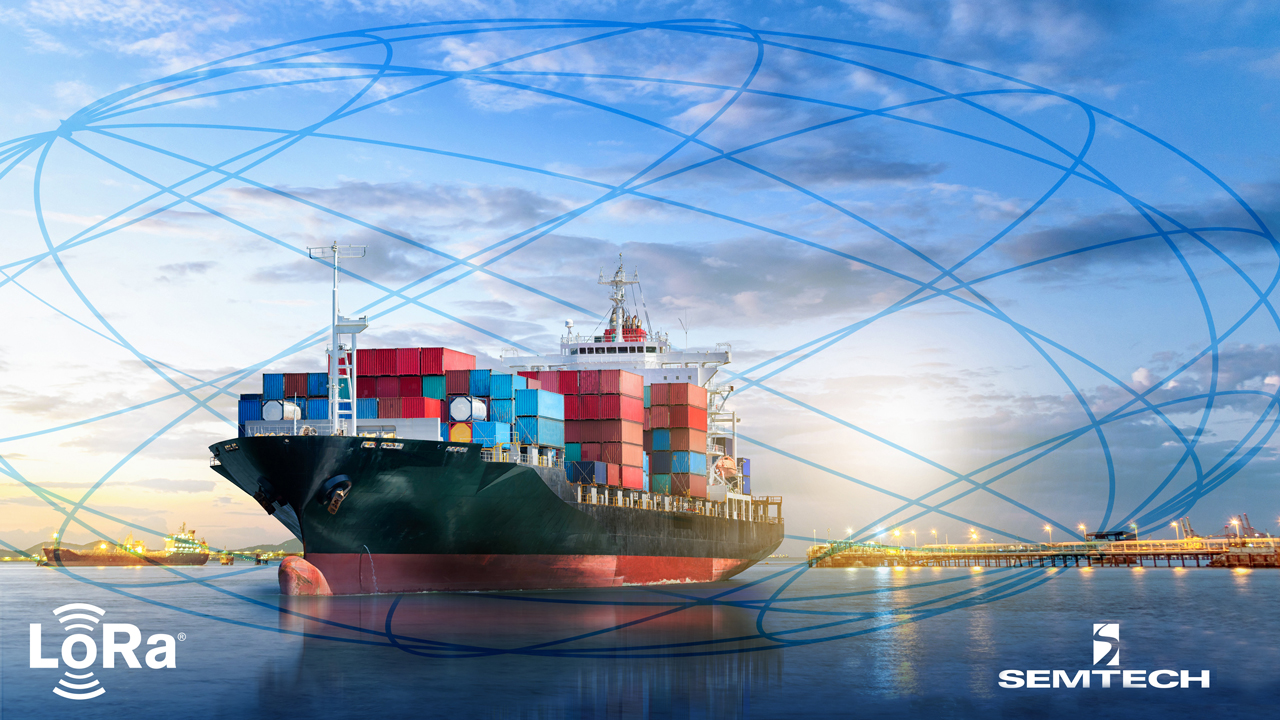TechnologyJanuary 22, 2022
IoT-connected sensors bring geolocation services to the supply chain

IoT-connected sensors with cloud-based geolocation capabilities allow organizations to monitor assets over large geographic regions. With this technology in place, retailers can work directly with their manufacturers and logistics partners to mitigate potential delays in the supply chain while managing customer expectations.
The Internet of Things (IoT) connects billions of smart devices and sensors all over the world, enabling real-time monitoring and tracking of events. However, IoT is typically discussed in land-based activities; applications in the world’s oceans are limited.
The World Shipping Council estimates that there are, on average, 1,382 containers lost at sea each year. With wireless sensors using Semtech’s LoRa devices and the LoRaWAN standard, companies can monitor many variables while vessels are at sea to conduct preventive maintenance. This includes the status of shipping containers, the condition of machinery, fuel efficiency, environmental metrics, and cargo.
Monitoring assets is even more challenging in today’s supply chain shortage; it’s increasingly important to know where packages are within the journey from the factory to the customer. IoT-connected sensors with Cloud-based geolocation capabilities allow organizations to monitor assets over large geographic regions. With this technology in place, retailers can work directly with their manufacturers and logistics partners to mitigate potential delays in the supply chain while managing customer expectations.
Smarter asset management
Asset management technology can be expensive or impractical to implement because of the vast distance the asset needs to travel. By combining cost-efficient, low power and secure wireless connectivity with a standardized infrastructure, asset management becomes much more cost-effective and reliable.
With long range, low power technology, IoT solutions are scalable and easy to implement. It also fills the technology gap left by high bandwidth, high power technology. For example, cellular and Wi-Fi/BLE-based networks require either high bandwidth or high power and have a limited range or an inability to connect to land networks.
Long range, low power sensors can be embedded into assets, such as pallets, packages and containers, to provide better visibility into the supply chain. With sensors and location data, track and trace applications can be used for data transmission frequency ranging from hours to less than a few minutes.
The main difficulty with asset tracking solutions is linking remote sensors wirelessly to the internet across a variety of sites in a seamless manner.
Benefits of geolocation
Geolocation-equipped devices bring better asset management to further optimize supply chain operational processes. Geolocation in every device can significantly lower the Total Cost of Ownership (TCO) for deploying sensors and trackers.
Access to reliable location data is increasingly valuable to production managers, reducing the potential for assets to be misplaced or lost entirely during their journey. To help companies navigate the supply chain crisis, access to real-time data allows enterprise operations to better manage operations through the supply chain process.
The real-time visibility into supplier activity accelerates time-to-market, reduces operational design complexity, and decreases costs of over purchasing since retailers are aware of when their shipments are coming in.
Sensors leveraging LoRa can help supply chain professionals significantly lower the cost and reduce the design complexity of their IoT asset tracking and monitoring solutions. A transceiver can utilize Global Navigation Satellite System (GNSS) tracking for outdoor applications and Wi-Fi passive scanning for tracking indoor assets, enabling continuous indoor-outdoor tracking on a single chip.
When GNSS technology is combined with LoRa devices, the combination of these two technologies offers:
Increased productivity
Implementing IoT solutions to monitor assets provides workers with the ability to quickly locate and deploy assets, saving time, fuel, equipment and resources.
Efficient operations
With geolocation technologies, logistics managers can streamline the workforce needed to track down vehicles, product movements and statistics. With two-way communication, fleet managers can communicate with their team in real time.
Location tracking
Implementing a low power, long range solution into the supply chain can simply inform managers of the whereabouts of goods and prevent theft and other losses.
Looking forward
By leveraging connected solutions, companies can replace inefficient and costly processes with IoT-enabled asset management solutions. This holiday season and beyond, implementing smart sensors with long range and low power capabilities will better position companies to help mitigate potential errors and streamline the supply chain process.
Marc Pégulu, Vice President, IoT Strategy and Products, Semtech


